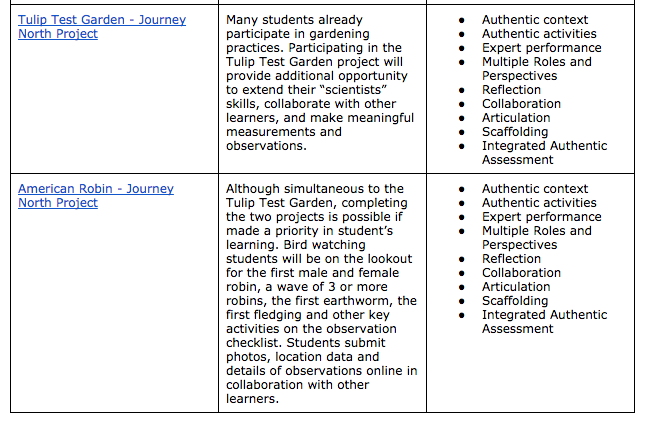- How can learning be distributed and accelerated with access to digital resources and specialized tools and what are several implications of learning of math and science just in time and on demand?
Digital resources and specialized tools expand the diversity of opportunities available to students and teachers. Limitations such as financial resources, geographic location, and student circumstances can be at least somewhat addressed through digital options. The building of learning communities helps promote distributed learning. Magdalene Lampert (1990) explains that a participation structure has been defined by Florio, Erickson, and Shultz as “the allocation of interactional rights and obligations among participants in a social event; it represents the consensual expectations of the participants about what they are supposed to be doing together, their relative rights and duties in accomplishing tasks, and the range of behaviours appropriate in the event” (p. 34). Her article is focused on the social and student-led creation and experience of learning mathematics. Community and discourse is central to her approach. This process and hypothesis-testing approach to learning mathematics can also serve to accelerate learning by enabling students to truly understand the learning process and the content, thereby increasing the likelihood of effective application.
GLOBE is an impressive application of learning that is distributed through a community. Scientists and experts offer training to teachers and support and opportunity to students, and students are able to provide raw data for scientific projects. According to Butler and Macgregor (2003), “Students and teachers benefit from the scientists not only as sources of knowledge and modelers of scientific reasoning but also an inspiration and role models for students who may choose to pursue careers in science and technology” (p. 18). Students participating in GLOBE projects have a real and authentic purpose for their work, which should increase engagement and thereby encourage efficient use of class time and deeper student learning both inside and outside of the classroom. They have a real opportunity to be a valuable part of the scientific process. Additionally, there is an opportunity for classes from various locations to team up on a project, thereby enabling each group to learn from the others and to share their own learning. A true community forms as students, educators, and researchers are each able to be teachers and learners.
As a rural teacher, virtual field trips and webcams stand out to be as an excellent opportunity to engage in visual and experiential learning despite challenges of location, time, or money. Being able to watch animal behaviour on camera, explore an otherwise inaccessible location, and interact with experts enables students to develop understandings that would not otherwise be readily available. I agree with the students in J. Spicer and J. Stratford’s study, however, who felt that the occurrence of real field trips and virtual field trips should not be mutually exclusive. “[I]nstead of allowing VFTs to be thought of as alternatives to ‘real’ field trips perhaps it would be best to explore how a VFT might either enhance preparations for a real field trip and act as a revision tool after a field trip, both approaches potentially giving ‘value-added’ to the real field trip” (Spicer & Stratford, 2001, p.352). From a business perspective, virtual field trips can be more cost effective; however, the experience is not the same. Both virtual field trips and real field trips offer students valuable learning experiences, but these experiences could be best implemented in complement to one another, as opposed to in place of one another, wherever possible.
As a whole, student learning will be accelerated by experiences that enable them to make insightful connections, understanding the reasoning behind learning, and feel like they are part of something greater than themselves. Distributed cognition in which different participants in learning have different strengths and understandings to offer helps to reinforce the value of community in learning. An effective teacher will recognize and create opportunities for experts to be involved in lessons. Each member of the learning community can improve the learning experience, and the larger the community is, the greater the power of the distributed knowledge. The whole is stronger than the sum of its parts. Learning math and science on demand and just in time simulates the scientific and mathematical research processes in which research is conducted in response to a need. As students are able to learn in timely contexts, they can be better able to make connections between what they are learning and the applications and importance of it. This can be a challenge, however, when a need arises and the community of support is not available or accessible. In these situations, students must be confident that they can rely on their own understanding of the learning process and their previous knowledge to help them explore solutions.
Resources
Butler, D.M., & MacGregor, I.D. (2003). GLOBE: Science and education. Journal of Geoscience Education, 51(1), 9-20.
Lampert, M. (1990). When the problem is not the question and the solution is not the answer: Mathematical knowing and teaching. American educational research journal, 27(1), 29-63.
Spicer, J., & Stratford, J. (2001). Student perceptions of a virtual field trip to replace a real field trip. Journal of Computer Assisted Learning, 17, 345-354.

